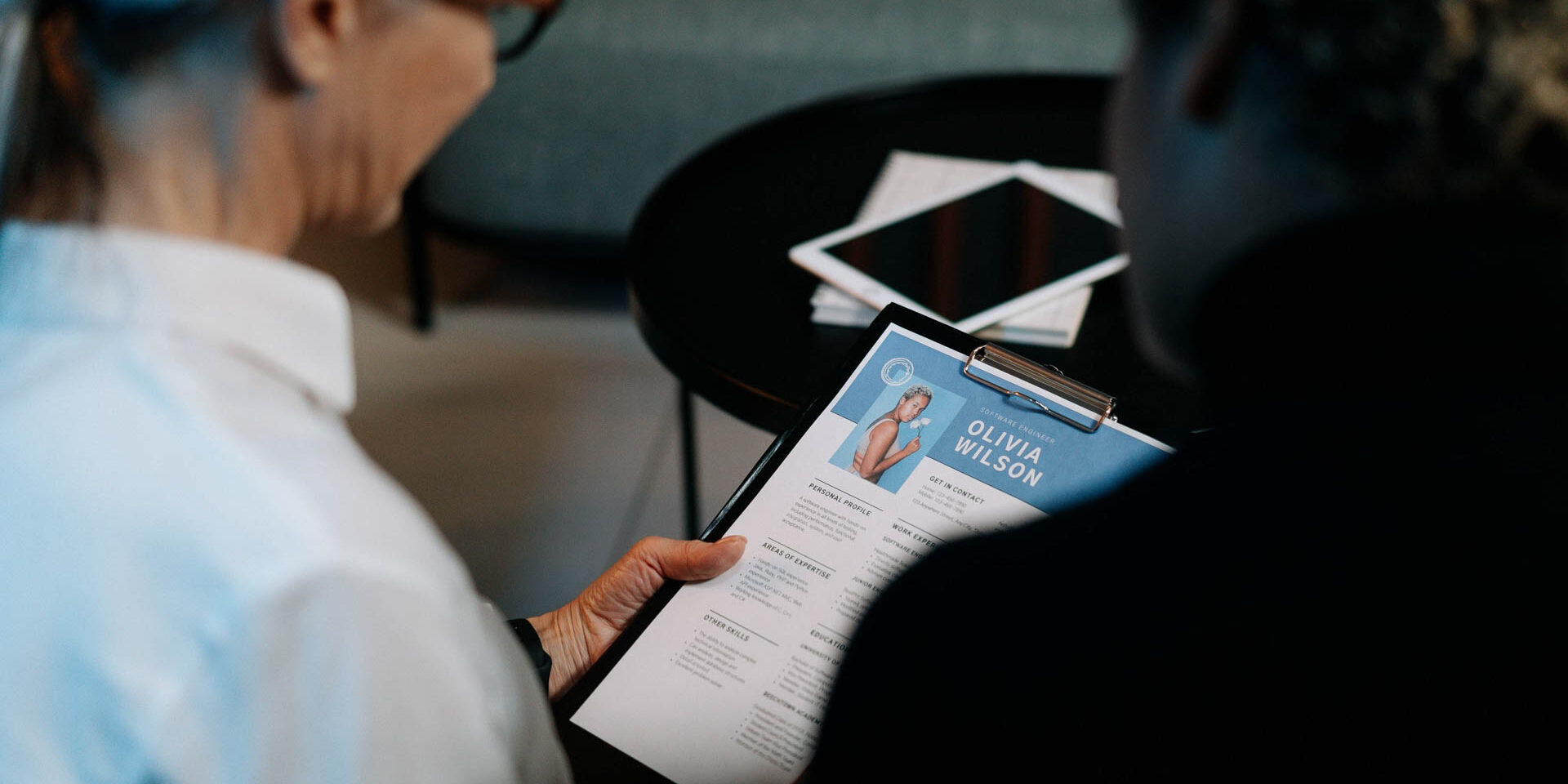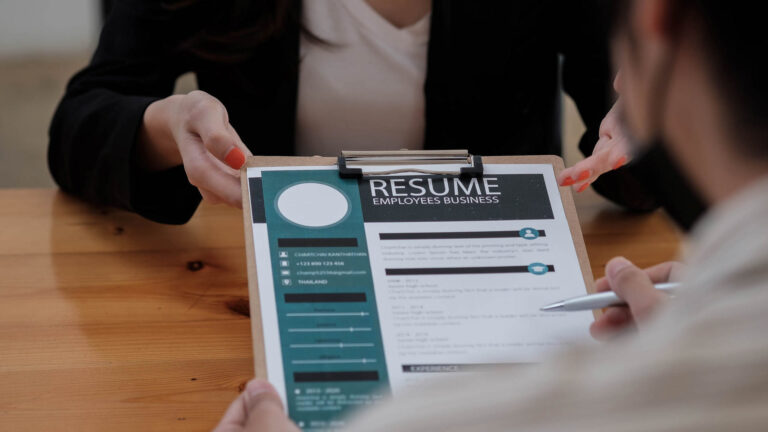A phlebotomist plays a vital role in the healthcare industry by collecting blood samples for laboratory testing. If you are a skilled phlebotomist seeking a new job opportunity, you need a well-crafted resume that highlights your qualifications and achievements. This article aims to provide you with winning examples of a phlebotomist resume that can catch the attention of hiring managers.
Explanation of a Phlebotomist Resume
A phlebotomist resume is a document that showcases your skills, qualifications, and work experience in the phlebotomy field. The resume should include your educational background, relevant certifications, and work experience. It should also highlight your ability to work in a fast-paced environment, handle diverse patient populations, and maintain accurate records.
Objectives of the Article
The main objective of this article is to help phlebotomists create a winning resume that will stand out to potential employers. By providing examples and tips on how to build a strong resume, we aim to help phlebotomists market their skills and experience effectively.
Who is this Article for?
This article is for anyone seeking a job in the phlebotomy field or who wants to update their resume. It is also helpful for students and recent graduates who are about to enter the job market. Our examples and tips can help you create a compelling resume that shows off your skills and experience in the best possible light. Whether you are a seasoned phlebotomist or just starting your career, this article is for you!
Understanding the Role of a Phlebotomist
As a Phlebotomist, your primary responsibility is to draw blood samples from patients for medical testing, examination, and sometimes blood donations. The process includes verifying the patient’s identity, explaining the procedure, preparing the equipment, and carefully extracting the blood sample. You may also be responsible for managing the specimen samples and sending them to the laboratory for testing.


Job Description of a Phlebotomist
A Phlebotomist’s job description involves more than just drawing blood. You might have to check the patient’s vital signs, review their medical history, and ensure that the blood test is ordered correctly. Additionally, you may be responsible for maintaining equipment, keeping records, and managing the inventory. Phlebotomists must adhere to proper safety protocols and procedures to ensure that both the patient and the Phlebotomist remain safe throughout the process.
Skills and Qualifications required for the Job
To become a Phlebotomist, you must have a high school diploma or equivalent, and complete a training program that includes both classroom instruction and hands-on clinical practice. You will need excellent communication skills, as you must explain the process to the patient and often calm their fears or anxieties. Phlebotomists must also have a keen attention to detail, as they are responsible for accurate labeling and handling of specimens. Knowledge of proper sterilization protocols and blood collection techniques is a must. Additionally, Phlebotomists must be compassionate and patient-focused, as they often work with patients who are ill, anxious, or in pain.
Importance of a Good Phlebotomist Resume
A well-crafted Phlebotomist resume is critical to landing your dream job. It should showcase your skills, qualifications, and experience, and highlight your strengths in patient care, lab procedures, and record-keeping. Your resume should be concise and easy to read, with bullet points that draw attention to your achievements. Including any relevant certifications or awards can help set you apart from other applicants. Your resume should also demonstrate your professionalism, attention to detail, and ability to work as part of a team. With a solid resume, you can stand out to hiring managers and increase your chances of landing the job you want.
As a Phlebotomist, you play a critical role in the healthcare industry. A good understanding of the job description, required skills, and the importance of a well-crafted resume can help set you on the path to a successful and rewarding career in Phlebotomy.
How to Structure your Phlebotomist Resume
When crafting your phlebotomist resume, it’s important to consider the overall structure and formatting to make sure that it stands out among other job applications. Here are some essential elements to include:
Parts of a Phlebotomist Resume
-
Contact information: This section should include your full name, professional title, email address, phone number, and mailing address.
-
Professional summary: A short, 2-3 sentence statement that summarizes your phlebotomy experience, skills, and career goals.
-
Education: List your highest completed education, including the name of the institution, degree or certification earned, and the date of completion.
-
Clinical experience: Include all relevant phlebotomy work experience, including the name of the employer, dates of employment, and job duties.
-
Skills: Mention any relevant skills or certifications related to phlebotomy, such as CPR certification or proficiency in using phlebotomy equipment.
-
References: Include 1-2 professional references who can vouch for your phlebotomy skills and experience.
Chronological vs. Functional vs. Combination Resume
There are three main types of resumes: chronological, functional, and combination. A chronological resume lists your work experience in reverse chronological order, while a functional resume focuses more on your skills and experience. A combination resume is a hybrid of the two, highlighting both your job duties and skills.


When applying for a phlebotomy job, a chronological or combination resume is usually the best choice, as it showcases your work experience in phlebotomy and how you’ve developed your skills over time.
Choosing the Right Format for your Resume
When creating your phlebotomy resume, choose a simple and easy-to-read format. Use bullet points, bolding, and spacing to break up long sections of text and make it visually appealing.
Tips on Writing a Strong Phlebotomist Resume Objective or Summary
Your objective or summary statement should be short and to the point. It should highlight your top phlebotomy skills and experience, and show the employer how you can contribute to their team.
How to Highlight Relevant Skills and Competencies
When describing your clinical experience, use clear and concise language to describe your phlebotomy duties and accomplishments. Highlight any experience working with specific patient populations, using specialized equipment or techniques, and working in a fast-paced environment. Mention any relevant certifications or continuing education courses you’ve completed, as this shows that you’re committed to staying up-to-date in your field.
Phlebotomist Resume Writing Tips
As a phlebotomist, creating an effective resume is key to landing your dream job. Here are some tips and tricks to make your resume stand out:
Tips and Tricks for Writing an Effective Resume
- Tailor your resume for each job application to highlight your relevant experience and skills.
- Use bullet points to clearly list your achievements, rather than long paragraphs.
- Use action verbs and quantitative data to showcase your accomplishments and impact.
- Include any relevant certifications, such as CPR or medical assistant.
- Keep your resume concise and focused, ideally one page in length.
Editing and Proofreading your Resume
Once you’ve created your phlebotomist resume, it’s important to thoroughly edit and proofread before submitting. Here are some key steps to follow:
- Check for spelling and grammatical errors.
- Ensure consistency in formatting throughout the resume.
- Avoid using buzzwords or cliches that don’t add value.
- Have someone else read through your resume for a fresh perspective.
Common Resume Mistakes and How to Avoid Them
Here are some common mistakes that phlebotomists make on their resumes, along with tips on how to avoid them:
- Including irrelevant experience or skills – make sure to only include information that is directly related to the phlebotomy job.
- Focusing on job duties rather than accomplishments – use quantifiable data to showcase how you made a difference in previous positions.
- Not tailoring the resume for the specific job – each job posting should be carefully read to ensure that the resume is tailored to the employer’s needs.
- Failing to include certifications or relevant education – these should be highlighted to showcase your qualifications and potential value to the employer.
By following these tips and avoiding common resume mistakes, your phlebotomist resume is sure to stand out from the crowd and land you the job of your dreams.
Phlebotomist Resume Example – Sample I (with Annotations)
This section of the article will discuss Sample I, which is an effective Phlebotomist resume example. The sample will be analyzed in detail, including its strengths and weaknesses, and tips will be provided on how to adjust the resume to fit individual needs.
Detailed Explanation of Sample I
Sample I is a powerful and well-structured Phlebotomist resume that showcases the candidate’s skills and experience in a clear and concise manner. The resume begins with a summary statement that highlights the candidate’s qualifications, skills, and experience. This is followed by a skills section that lists keywords that employers would look for, such as “venipuncture,” “patient care,” and “blood collection.”
The education section is next and includes the candidate’s degree and any relevant certifications. The work experience section is presented in reverse chronological order, highlighting the candidate’s most recent experience first. Each section provides relevant information and uses metrics to emphasize the candidate’s achievements.
Pros and Cons of the Resume
One of the main strengths of Sample I is its organization and structure. The resume is easy to read and follows a logical sequence. Another strength is its use of metrics, which quantify the candidate’s achievements and provide concrete evidence of their skills and experience. A potential weakness is that the resume might be overly formatted and lack personality. Additionally, there is no mention of any soft skills or personal qualities that would make the candidate stand out from others.
Tips on What to Learn from the Sample
There are several things that job seekers can learn from Sample I. Firstly, they can use it as a guide for how to structure their own resumes. The sections and content are well-organized and provide a clear roadmap for presenting one’s qualifications. Secondly, job seekers can incorporate metrics into their resumes whenever possible. Numbers provide evidence of one’s accomplishments and add weight to one’s claims. Thirdly, job seekers can consider including a summary section at the top of their resume to highlight their most impressive and relevant qualifications and experience.
How to Adjust the Resume to Fit Your Needs
There are several ways that job seekers can adjust Sample I to fit their individual needs. Firstly, they can make changes to the keywords and phrases in the skills section to highlight their own capabilities. Secondly, they can alter the formatting and layout to suit their own preferences. Thirdly, they can personalize the summary section, highlighting their own unique experience and qualifications. Finally, job seekers can consider adding a section on soft skills or personal qualities, which would set them apart from other candidates.
Sample I is an excellent Phlebotomist resume example that can serve as a guide for job seekers looking to create a winning resume. By analyzing its strengths and weaknesses and incorporating its best practices, job seekers can increase their chances of landing their desired job.
Phlebotomist Resume Example – Sample II (with Annotations)
Detailed Explanation of Sample II
Sample II is a strong example of a Phlebotomist Resume that effectively showcases the candidate’s skills and experience. The resume begins with a professional summary that highlights the candidate’s years of experience and expertise in phlebotomy. The summary is followed by a well-structured list of skills that are relevant to the position of a phlebotomist.
The rest of the resume is divided into two sections: Education and Work Experience. The Education section briefly mentions the candidate’s qualifications in phlebotomy, including their certification and relevant coursework.
The Work Experience section is where Sample II really shines. The candidate has listed their work experience in reverse chronological order, starting with their most recent position. Each position includes the employer’s name, the job title, and the dates worked, followed by a bullet-point list of the candidate’s key achievements and responsibilities in that role. This approach makes it easy for the employer to quickly understand the scope of the candidate’s work experience and how it relates to the job they are applying for.
Pros and Cons of the Resume
One of the main strengths of Sample II is its clear and concise structure. The use of bullet points and easy-to-read font make the resume easy to scan, while the well-organized sections make it easy to navigate. The resume also showcases the candidate’s key skills and accomplishments in a way that highlights their expertise and experience.
One potential weakness of the resume is the lack of detail in the Education section. While the candidate’s certification and relevant coursework are mentioned, there is no information about where they earned their degree or any additional education they may have completed.
Tips on What to Learn from the Sample
Sample II is a great example of how to structure and write a strong phlebotomist resume. Some key takeaways include:
- Start with a professional summary that highlights your years of experience and expertise.
- List your key skills in a well-organized and easy-to-read format.
- Structure your work experience section in reverse chronological order, and use bullet points to highlight your key achievements and responsibilities in each role.
How to Adjust the Resume to Fit Your Needs
When adjusting Sample II to fit your own needs, consider the following:
- Customize the professional summary to reflect your own experience and expertise.
- Add any additional relevant skills that you have.
- Provide more detail in the Education section as needed.
- Make sure your work experience is listed in chronological order, with your most recent position listed first.
- Use active verbs to describe your accomplishments and responsibilities in each role.
Customizing your Phlebotomist Resume for your Target Job
When applying for a phlebotomist position, it is important to customize your resume to fit the specific job requirements of the position you are targeting. This requires researching the job position and tailoring your resume to demonstrate why you are the ideal candidate for the job.
Researching your Target Job
Before you start customizing your resume, it is essential to first research the job position and requirements thoroughly. This will allow you to understand the specific skills, experience, and qualifications the employer is looking for in a candidate. This will also give you a better idea of the type of format and tone to use in your resume.
One of the best ways to research a job position is by reading the job description carefully. Pay close attention to the specific skills, experience, and qualifications listed, and make a list of keywords that you can incorporate into your resume. You can also research the company’s culture and values to get a better sense of what they are looking for in their employees.
Tailoring your Resume to Fit the Job Requirements
Once you have researched the job position and requirements, it is time to tailor your resume to fit the job requirements. This means highlighting your skills and experience that are relevant to the position you are applying for.
Start by including a professional summary that highlights your experience and qualifications that match the job requirements. Make sure to also include a skills section that showcases the specific skills the employer is looking for.
Be sure to also include specific examples and achievements that demonstrate your expertise in phlebotomy. Avoid generic statements and focus on specific accomplishments to help your resume stand out.
Tips on How to Make your Resume Stand Out
To make your phlebotomist resume stand out, it is also important to use a clean and professional format that is easy to read. Use bullet points to break up large blocks of text and make sure to include plenty of white space to make your resume visually appealing.
Another way to make your resume stand out is by including relevant certifications and training programs that demonstrate your expertise and commitment to the field. This will show employers that you are a dedicated and knowledgeable candidate.
Finally, don’t forget to proofread your resume carefully for spelling and grammar errors. A well-written and error-free resume will make a positive first impression on potential employers and increase your chances of landing an interview.
Customizing your phlebotomist resume for your target job requires researching the job position, tailoring your resume to fit the job requirements, and making your resume stand out through a clean and professional format, relevant certifications, and attention to detail. By following these tips, you can create a winning resume that showcases your experience and qualifications as a phlebotomist.
Phlebotomist Cover Letter Example – Sample I (with Annotations)
As a professional copywriter and subject matter expert, I have reviewed the Phlebotomist Cover Letter Example (Sample I) and provided detailed explanations, pros and cons, tips on what to learn, and advice on how to adjust the cover letter to fit your needs.
Detailed Explanation of Sample I
The Phlebotomist Cover Letter Example (Sample I) is a simple, yet effective cover letter that showcases the candidate’s skills, experience, and qualification for the phlebotomist position. The letter opens with a strong introduction, stating the candidate’s name and expressing their enthusiasm for the phlebotomy role.
Moreover, the cover letter highlights the candidate’s relevant experience in phlebotomy and laboratory techniques. The writer emphasizes their ability to conduct various types of lab tests, such as urinalysis, blood testing and cultures, and performing laboratory procedures by following the appropriate guidelines and safety measures.
The candidate describes their ability to manage multiple clients, meet deadlines, and collaborate with other healthcare professionals for effective patient care. They also provide specific examples of their previous work experience that demonstrates their proficiency in the field.
Pros and Cons of the Cover Letter
The Pros of this cover letter are that it is concise and straightforward. The writer has highlighted their relevant experience, skills, and qualifications for the role, making it easy for the potential employer to understand the value that the candidate can add to their organization.
Moreover, the cover letter is well-structured, making it easy to read and follow. The writer has used bullet points to highlight their key accomplishments, making it easy to find relevant information quickly.
However, the cover letter might come across as too generic for some employers. While the candidate has highlighted their experience and skills, they have not customized the cover letter to match the specific needs of the employer. Furthermore, they provide little information about why they want to work with the specific company or what specifically attracts them to the phlebotomy role.
Tips on What to Learn from the Sample
There are several tips you can learn from the Sample I of the Phlebotomist Cover Letter Example. These tips include:
- Start your cover letter with a strong introduction.
- Highlight your skills, qualifications, and relevant experience.
- Provide specific examples of your accomplishments in the field.
- Use bullet points to make your cover letter easy to read and follow.
- Customize your cover letter to match the specific needs of the employer.
- Show enthusiasm for the phlebotomy role and explain why you want to work with the company.
How to Adjust the Cover Letter to Fit Your Needs
To adjust the Phlebotomist Cover Letter Example (Sample I) to fit your needs, consider the specific requirements and preferences of the employer. Research the company and their values, and demonstrate how your skills and experience align with their goals and aspirations.
Phlebotomist Cover Letter Example – Sample II (with Annotations)
In this section of the article, we will be discussing sample II of the phlebotomist cover letter. The cover letter is an important part of any job application and can determine whether or not you will be called for an interview. Therefore, it is important to create a cover letter that is informative, professional, and engaging.
Detailed Explanation of Sample II
Sample II of the phlebotomist cover letter is written by a candidate with some experience in phlebotomy. The cover letter begins with a strong opening statement that highlights the candidate’s passion for the job and the skills they bring to the table. The letter then goes on to provide specific examples of the candidate’s experience and achievements in their previous roles.
One of the strengths of this cover letter is its use of specific examples. The candidate provides concrete examples of how they have contributed to their previous workplaces, which can help to make their application stand out. Additionally, the candidate does a good job of highlighting their relevant skills, such as their attention to detail and their ability to work under pressure.
However, there are a few areas where this cover letter could be improved. For example, the candidate does not provide much detail on why they are interested in this particular position. It is also somewhat unclear what the candidate’s career goals are. These are both areas that could be addressed to make the cover letter more effective.
Pros and Cons of the Cover Letter
Pros:
- The candidate provides specific examples of their experience and achievements
- The cover letter highlights the candidate’s relevant skills
- The letter has a passionate and engaging opening statement
Cons:
- The candidate could provide more detail on why they are interested in the position
- It is unclear what the candidate’s career goals are
Tips on What to Learn from the Sample
There are several things that you can learn from sample II of the phlebotomist cover letter. Firstly, it is important to provide specific examples of your experience and achievements. This can help to make your application stand out and show the employer why you are a good fit for the role. Additionally, it is important to highlight your relevant skills and to have a passionate and engaging opening statement.
However, it is also important to make sure that you provide enough detail on why you are interested in the position and what your career goals are. This can help to show the employer that you are serious about the role and that you have a plan for your future career.
How to Adjust the Cover Letter to Fit Your Needs
When adjusting the cover letter to fit your needs, there are several things that you should consider. Firstly, you should make sure that you provide specific examples of your experience and achievements that are relevant to the position you are applying for. This can help to show the employer that you have the skills they are looking for.
Common Phlebotomist Interview Questions and Answers
When preparing for a phlebotomist job interview, it’s important to know what questions to expect and how to answer them confidently. In this section, we will cover common phlebotomist interview questions and provide tips on how to impress the interviewer.
Preparing for the Interview
Before the interview, it’s important to research the company and the position you’re applying for. Look into the company’s mission statement, core values, and previous work to get a sense of the company’s culture. Additionally, review the job description, requirements, and responsibilities to ensure you meet the qualifications.
It’s also helpful to practice answering common interview questions and preparing for any unique questions related to the job. You can do this by researching online, practicing with a friend, or scheduling a mock interview with a career counselor.
Common Interview Questions and How to Answer Them
Here are some common phlebotomist interview questions and tips on how to answer them:
-
Tell me about yourself. This is often the first question asked in an interview. Provide a brief overview of your education, work experience, and skills. This question is an opportunity to highlight your relevant experience, so tailor your response to the position you’re applying for.
-
What are your strengths and weaknesses? When answering this question, focus on skills that will be useful in the position. For example, you could highlight your attention to detail, ability to work under pressure, or strong communication skills. When discussing weaknesses, choose something that is not essential for the position, and show how you are working to improve it.
-
What relevant experience do you have? Be prepared to discuss your experience in phlebotomy or related medical fields. Highlight your experience with different types of patients, equipment used, and any additional certifications or training.
-
How do you handle difficult patients or situations? This question is designed to assess your conflict resolution and critical thinking skills. Provide an example of a difficult situation you’ve encountered in the past, and explain how you resolved it.
-
Why do you want to work for this company? Show that you’ve done your research on the company and provide specific reasons why you’re excited about the opportunity to work for them. This could include their core values, a specific project or program they’re working on, or their reputation in the industry.
Tips on How to Impress the Interviewer
Here are some tips on how to make a great impression during your interview:
- Dress professionally and arrive on time.
- Be friendly and personable with the interviewer.
- Listen carefully to each question asked and give thoughtful, concise answers.
- Bring copies of your resume, certifications, and any other relevant documents to the interview.
- Ask insightful questions about the company or position to show your interest and engagement.
Related Articles
- Zoo Keeping Resumes: Writing Tips and Examples in 2023
- Handling Job Interview Questions About Your Failures
- Office Coordinator Resume: Winning Examples for 2023
- SQL: A Clear Guide to Understanding What It Is in 2023
- Interview Question: “What Areas Need Improvement?”









